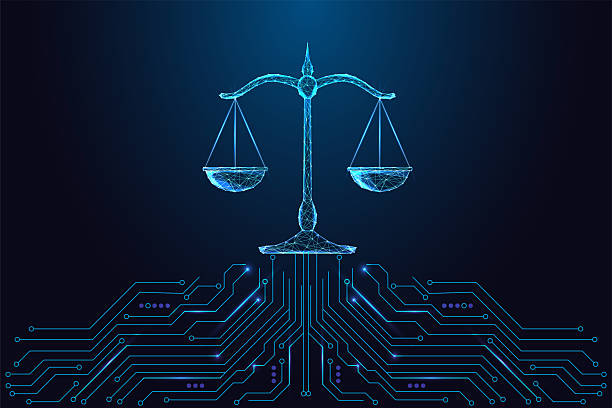Building Resilient, Compliant Enterprises

Q1. Could you start by sharing how your career journey in enterprise architecture and business change has shaped the way you approach large-scale digital transformation programs?
I have been in IT and IT transformational management roles for 25 years. At Accenture, I worked on IT transformation programs involving cloud security, data, AI, and ERP business processes. I'm currently the head of Enterprise Architecture, overseeing the enterprise architecture decisions for a large medical technology company in the Nordics.
Q2. With new regulations around data and AI coming into force, what are some real use cases where you’ve seen compliance successfully embedded into transformation programs without slowing down innovation?
This area is particularly tricky because the regulations, especially those concerning AI, are being developed in real time. Government regulations from the European Union, the US, and other regions are not yet set in stone, making it essential to maintain agility when running programs and projects related to data and AI. Solutions must be adaptable to quickly implement additional security controls as new government security requirements arise. The landscape remains fluid, and the proliferation of bespoke solutions from new market entrants further complicates integration and data management. As a result, organizations need to be flexible, ensuring they can amend solutions and add controls without sacrificing innovation.
Q3. AI is increasingly being integrated into IT and business processes. Can you share examples of use cases where enterprise architecture has enabled organizations to adopt AI in a safe, scalable, and value-adding way?
I can share several examples. In the field of medical technologies, which is highly regulated, all product documentation and version control—referred to as GxC—require precise audit controls. Enterprise architecture enables AI to automatically update user manuals whenever there are product changes, drawing the necessary information from the product information management system. A human then reviews these updates before they are published to authorities and end users. Another example is the use of AI for advanced data analysis, combining demographic, political, and climate event data to forecast purchasing patterns. For instance, in industries such as dairy or beverages, AI integrates climate data with major events or holidays to predict product demand, enabling companies to optimize their production and distribution. Additionally, AI is increasingly used within security to proactively manage and analyze data, helping organizations identify security intrusions and events that could disrupt business processes.
Q4. Sustainability is becoming a board-level priority. Could you highlight use cases where IT or enterprise architecture contributed to reducing energy consumption, improving efficiency, or enabling “Green IT”?
There are several approaches to this. First, IT and intelligent systems can improve logistics processes, reducing the carbon footprint associated with shipping products to customers. In terms of Green IT, performance and capacity monitoring are crucial for effective management. AI can be used to forecast IT capacity and performance needs, enabling organizations to scale servers up or down as required, thereby reducing power consumption. Further, climate and automation processes allow organizations to forecast temperature changes and pre-cool data centers when energy is abundant and less expensive—typically at night. This approach reduces the need for cooling during peak daytime hours. In summary, capacity management, energy-efficient cloud control, and proactive measures such as pre-chilling and pre-computing when energy is abundant and green are effective methods for reducing energy consumption and improving efficiency.
Q5. In global enterprises, balancing local flexibility with centralized standards can be tricky. What are some use cases where organizations got this balance right and created both agility and governance?
Achieving this balance requires a clear strategic intent and a well-defined critical path. Organizations that succeed typically have a strong vision and direction, enabling them to prioritize initiatives and maintain momentum. A comprehensive data model used across the enterprise allows for agility and the development of smaller, more efficient projects. Conversely, a lack of a unified data model often leads to inefficient, costly programs with bespoke data solutions. Thus, success comes from a strategic mission, a critical path, and robust data governance.
Q6. Security and resilience remain constant challenges. Could you share examples of use cases where enterprise architecture has strengthened business continuity or helped organizations respond effectively to disruptions?
Enterprise architecture is essential for understanding end-to-end solution blueprints that support business objectives. With clear visibility into solution architectures, organizations can pinpoint and mitigate security vulnerabilities, implement effective controls, and automate security processes. In the event of a security incident, this holistic view allows for easier system isolation and incident management. Additionally, defining security solutions at the enterprise level—whether outsourced, insourced, or automated—supports robust vulnerability management, intrusion detection, patching, and standard security operations.
Q7. If leadership teams or investors wanted to evaluate whether an organization’s architecture is future-ready, what specific use cases or proof points would you suggest they look for?
The first indicator is whether the organization has a critical path and a strategic solution roadmap, supported by a dedicated enterprise architecture function. It is also essential to determine if a comprehensive data management system or data model is in place across the entire enterprise. The use of development operations methods and agile practices, such as pods, demonstrates the ability to execute programs efficiently and effectively. Financial controls are another key area—organizations should be able to quantify IT spending and the value derived from IT investments. Additionally, business service management maturity is crucial: IT should be an integral part of business decision-making, not an afterthought. The highest maturity organizations can affirm these points, closely aligning IT with business, managing change in an agile manner, and maintaining financial control. Finally, security by design is vital, ensuring security is considered in every IT change.
Comments
No comments yet. Be the first to comment!
